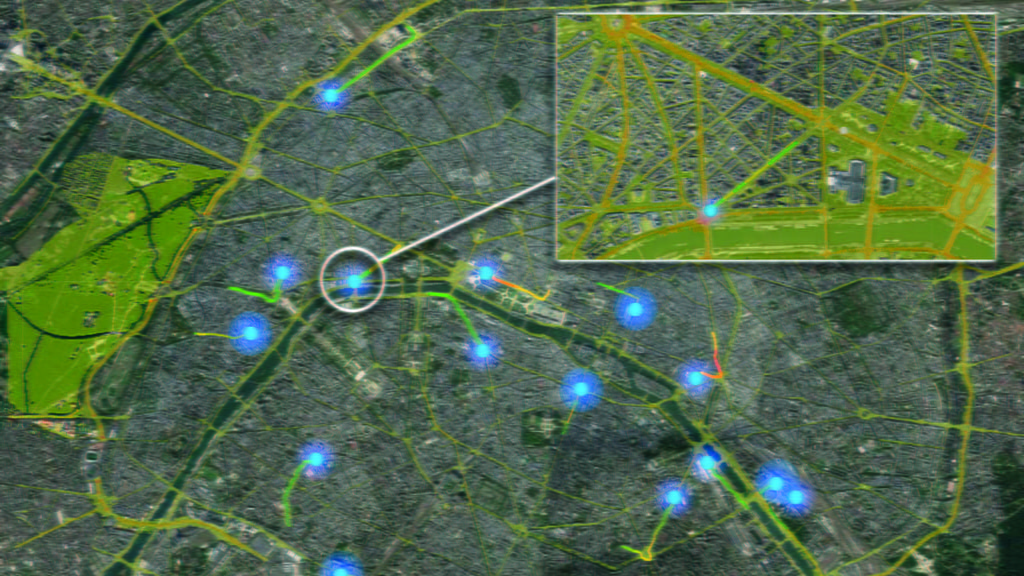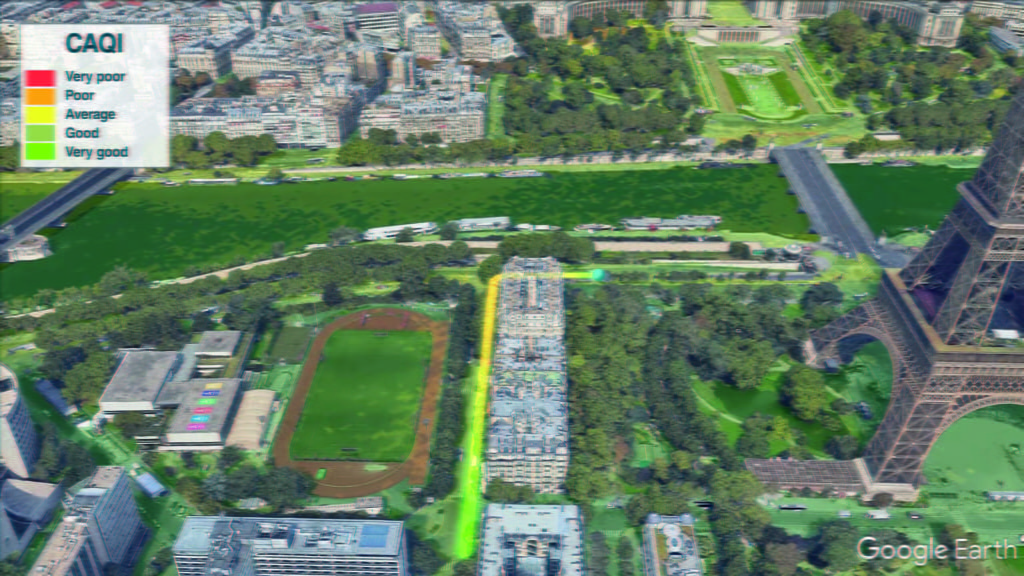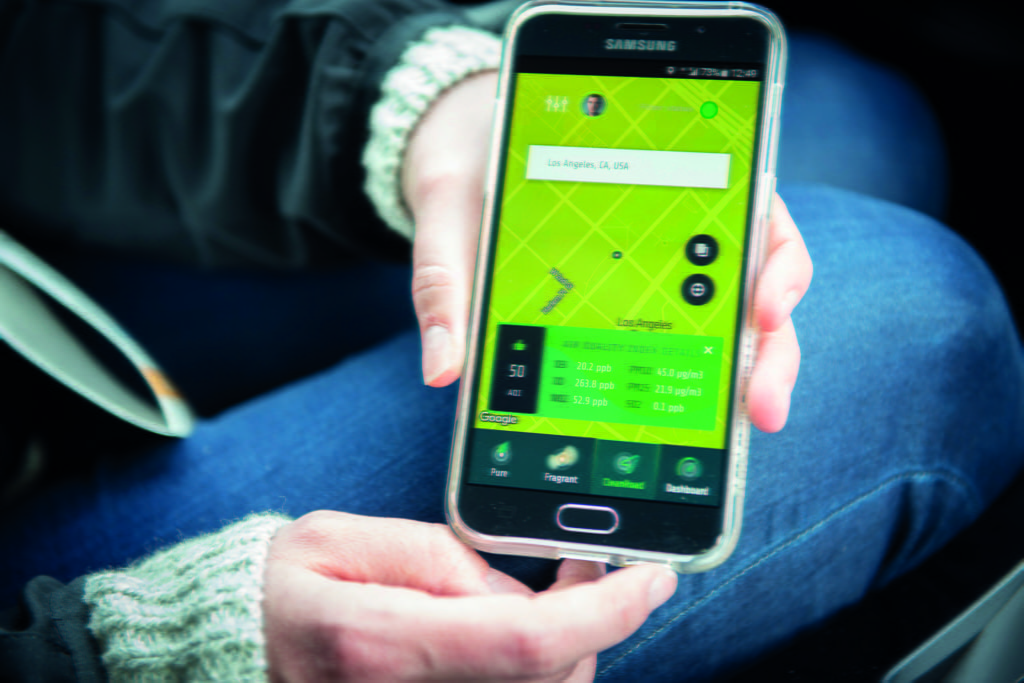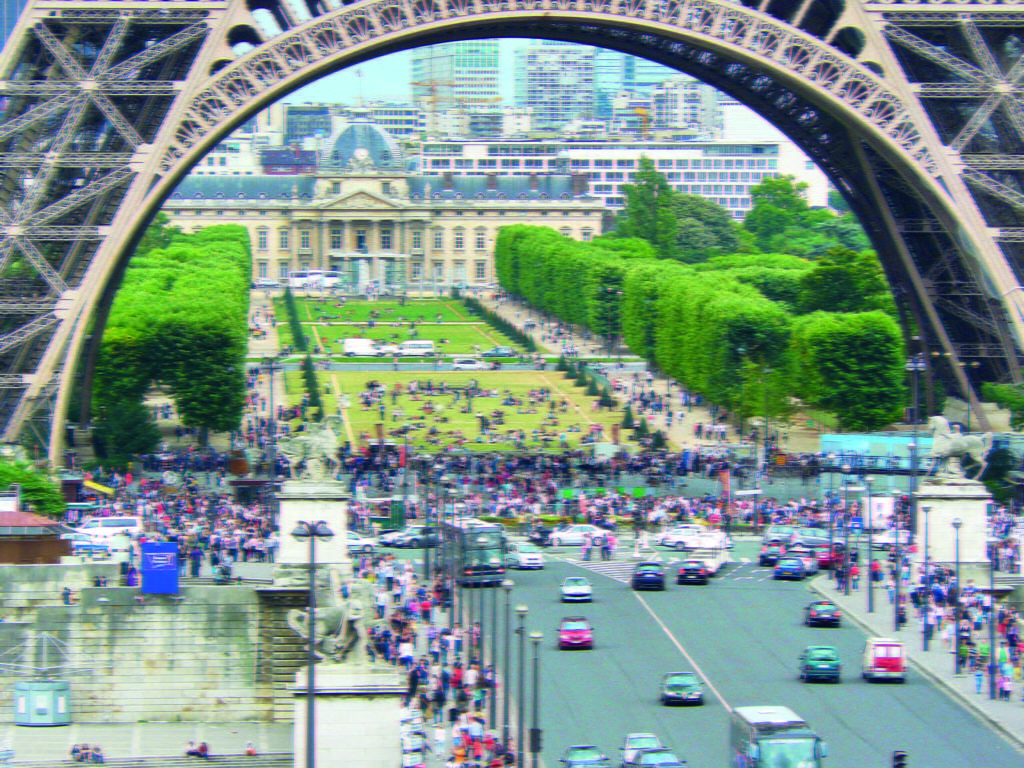To visualise the invisible: air quality mapping goes mobile on the streets of Paris
Valeo is taking its expertise in air quality detection for passengers and putting it to good use for citizens. The automotive supplier is using mobile sensors to generate dynamic, full-scale mapping of outside air quality levels in urban areas. For 28 weeks in Paris, the company equipped a fleet of 20 vehicles to track and transmit data in real time, compiling more than 28 million pollution data points and covering 80% of Parisian streets. Marion Deveycx reports
Air Quality has been catapulted to centre stage as one of Europe’s primary concerns for urban living. A large majority of Europeans believe that air pollution is the most alarming environmental issue we face. Likewise, the European Commission is addressing health risks associated with atmospheric pollution through increased regulatory pressures on European states and local authorities.
To meet these challenges, authorities in Paris have taken significant measures, like creating the Crit’air programme, which restricts authorization to vehicles to drive within city limits based on their air-quality label. The objective is to convince drivers to use cleaner vehicles and thus contribute to reducing atmospheric pollution on peak-pollution days.
CURRENT AIR QUALITY INDICES
Today France has its own Air Quality Index, reinforced by the European Air Index, called “CITEAIR, which both communicate pollution levels to the public. But existing models have certain limits, as they are based on static monitoring stations and on an average estimation of pollution levels over a given time period (1 hour in Paris).

Valeo’s dynamic pollution mapping; spots represent each vehicle during the proof of concept in Paris
What is an Air Quality Index?
MOBILE MAPPING WITH VALEO SENSORS
As a global leader in air quality management, Valeo anticipates long-term needs by developing innovative technical solutions for today’s growing emission reduction ecological challenges.
The company decided to put its expertise to work through a publicprivate initiative, conducting a proof of concept in which 20 electric vehicles were equipped with sensors to collect air quality data throughout the streets of Paris.
Over the span of 28 weeks, these vehicles crisscrossed Parisian neighbourhoods, collecting and delivering real-time data on pollutant concentrations in a hyperlocalized way.
By using mobile sensors, Valeo’s model is able to generate a dynamic and highly accurate monitoring of air quality in real time. The experiment also gained a more precise and dynamic understanding of how air pollution develops, concentrates, appears and disappears.
The sensors embedded in the fleet enable Valeo to build an “Air QuaIity Index” covering an exhaustive range of pollutants, which aggregates both data from the existing stations and from Valeo’s own air quality sensors. This forms a detailed mapping grid based on high-frequency data collection.

Close-up of a vehicle’s data tracking; the colour variations in the sensor track show different air quality levels measured at street level
A PRECISE AIR-QUALITY INDEX IN REAL TIME
To develop its High Definition Pollution Map, Valeo teamed up with two leading partners. EcoLogicSense, a TERA Group company, co-developed the sensors, and ARIA, specialised in the development of modelling algorithms for atmospheric environments, provided the mapping solution.
HOW IT WORKS
The Valeo sensors are positioned at the air-intake level of the vehicle in order to meet functional and operational constraints – such as extreme heat, vibration and humidity – and thus allow for the development of mass scale production. The sensors provide the precise measurements of several pollutants needed to accurately assess air quality: fine particles (PM2.5, PM10), sulphur and nitrogen dioxide, ozone and carbon monoxide.
Data concerning traffic estimates, weather forecasts and pollutant emissions are first pulled together to generate a base mapping. The data provided by Valeo mobile sensors – transmitted every second – are then used to complete and enrich this database and refine the modelling in real time. Each vehicle can thus deliver an instant mapping of the air quality surrounding it. And since urban air quality can significantly vary within a short distance and short time frame, instant mobile monitoring means a more precise view of which areas are most or least impacted.
Valeo is now leveraging miniaturisation technology to fine-tune its sensors and plans on bringing the technology to the market by the end of 2020. The technology can be integrated into a wide range of vehicle types for a number of mobile applications, including taxis, buses, tramways and small electric cars.
Valeo 2019
MOBILE AIR QUALITY APPS FOR URBANITES
The benefits of air-quality mapping will extend far beyond regulators and car manufacturers. Valeo plans to share this real-time information with everyday urbanites as well.
This will likely come in the form of a mobile app that combines air-quality tracking with other metrics that can impact passenger itinerary choices, such as traffic incidents, congestion and roadwork. By merging all this data together, the app proposes alternate routes, thus limiting the exposure of users – pedestrians, cyclists and drivers – to excessive pollution.
ADDRESSING THE CONCERNS OF LOCAL COMMUNITIES
To further transform technological innovation into concrete actions for communities, Valeo is keen on working with other cities and authorities – notably, the European Commission – to leverage substantial results in terms of air quality monitoring in large cities.
Findings from this Proof of Concept may also incite communities to consider corrective adjustments to improve air quality in particularly sensitive areas for pedestrians, such as schools, parks and bike paths, and monitor the real-time impact of these adjustments.
Ultimately, it’s all about having the tools and data necessary to make the right strategic planning decisions in terms of urban mobility, whether it be deviating certain routes, flexing public transportation according to local pollution peaks or implementing new, dynamic traffic-management tools.
Based on the results of the Paris study, other European cities are expressing strong interest in the Valeo solution. In the near future, as people look to technology and intelligence to live healthier lives, Valeo is ideally positioned to make the invisible aspects of pollution visible to everyday citizens.

Sample of Valeo’s air quality app proposing alternative “clean air” routes
FYI
